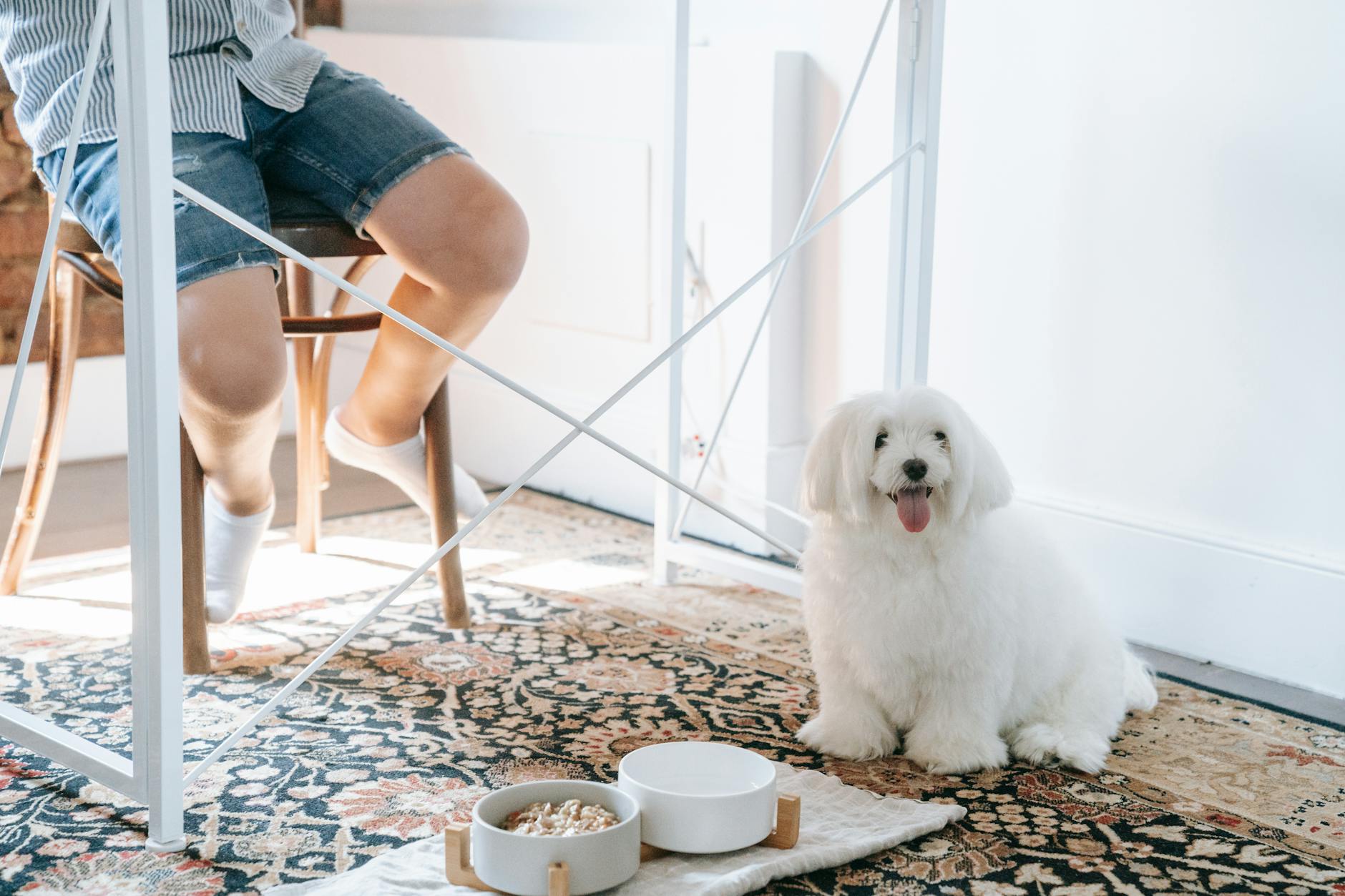This step-by-step guide provides instructions on how to calculate the right portion size for my dog’s food. Understanding the correct portion size is crucial to ensure your dog receives proper nutrition and maintains a healthy weight. By following this guide, you can make informed decisions regarding your dog’s diet and well-being.
Table of Contents
5 Tips to Calculate the Right Portion Size for My Dog’s Food
1. Understand Your Dog’s Needs
Identify how old your dog is to determine its specific food requirements. Puppies need food that supports growth and development, like high-protein diets, while senior dogs may require lower-calorie options. So, calculate the right portion size for my dog’s food and adjust the portion size according to your dog’s age to keep them healthy and energized.
Consider your dog’s size and breed characteristics to pick the right food. Large breeds might need food specially formulated to support joint health, while smaller breeds may benefit from smaller kibble sizes. Tailor the food to cater to your dog’s specific needs based on its breed to ensure they receive the right nutrients.
Pay attention to your dog’s activity level and choose food that meets their energy requirements. Active dogs may need high-protein diets, while less active dogs are better suited to lower-calorie options. Ensure your dog’s food aligns with its daily activity level to keep them fit and vigorous.
Lastly, be aware of any health conditions your dog may have that could impact its food requirements. Consult with a vet to determine if your dog has any allergies or sensitivities, then choose food that accommodates these conditions. Adjust the diet to support any health challenges your dog may face for their well-being.
2. Consult with a Veterinarian
Seek professional advice from a veterinarian to determine the appropriate portion size based on your dog’s individual needs. Schedule a consultation with a licensed veterinarian specializing in pet nutrition. Prepare questions about your dog’s age, weight, activity level, and any dietary restrictions. Present this information during the appointment for personalized guidance.
Review the veterinarian’s recommendations carefully. Follow the customized portion size instructions provided for your dog’s specific needs. Monitor your dog’s weight and adjust the portion size as necessary. Regularly consult with the veterinarian to ensure your dog’s dietary requirements are being met.
3. Read the Food Label
Check the feeding guidelines on the dog food packaging. Locate the section that details the recommended portion size for your dog’s specific weight. This information is crucial in ensuring that your furry friend is getting the right amount of food tailored to their individual needs. By following these guidelines, you can help maintain your dog’s ideal weight and overall health.
To understand the recommended portion size for your dog’s specific weight, first, identify your dog’s current weight. Then, refer to the feeding guidelines provided on the dog food packaging. Match your dog’s weight with the corresponding portion size recommended by the manufacturer.
Be mindful of variations in portion sizes based on the activity level, age, and breed of your dog. Adjust the amount of food accordingly to prevent overfeeding or underfeeding your dog. Always consult your veterinarian if you have any concerns about your dog’s diet or weight.
4. Monitor Your Dog’s Weight
To monitor your dog’s weight effectively, regularly weigh them to keep track of any changes. Weighing your dog will help you adjust the portion size of their food to ensure they stay at a healthy weight. Here’s how you can do it:
- Step 1: Weigh your dog on a scale once a week to establish a baseline weight.
- Step 2: Record the weight in a journal or use a note-taking app on your phone.
- Step 3: Compare the weight to the ideal range for your dog’s breed and size, which you can find online or ask your veterinarian for guidance.
- Step 4: Adjust the portion size of their meals accordingly if there are any fluctuations in weight. For example, if your dog is gaining weight, reduce the amount of food given. If they are losing weight, increase the portion size.
- Step 5: Re-weigh your dog after a few weeks to see if the changes have had the desired effect. Adjust the portion size again if needed.
By following these simple steps and keeping track of your dog’s weight regularly, you can ensure they maintain a healthy weight and live a happy, active life. Remember, portion control is key to their overall well-being!
5. Observe Your Dog’s Behavior
Pay attention to your dog’s appetite, energy levels, and overall health to fine-tune the portion size for optimal nutrition. Start by monitoring how your dog responds to the current portion size.
Observe whether they finish their meals eagerly or leave food behind. Gradually adjust the amount based on their appetite to ensure they are neither hungry nor overeating. Remember, a dog’s nutritional needs can change due to factors like age, activity level, and health conditions.
Evaluate your dog’s energy levels to gauge if they are receiving sufficient nutrition. Notice if they seem lethargic or overly hyperactive, as these could indicate issues with their diet. Optimal nutrition should provide them with the right balance to be energetic but not restless.
Consider jotting down notes about how they behave after each meal to track patterns and make informed adjustments. Take note of their overall health, including coat condition, digestion, and weight. These indicators can help you calculate the right portion size for your dog’s food if the portion size is meeting their nutritional requirements effectively.
- Observe food consumption: Check if your dog finishes meals eagerly or leaves food behind.
- Adjust portions gradually: Increase or decrease based on appetite to prevent overeating or hunger.
- Monitor energy levels: Note if they are lethargic or hyperactive after meals.
- Track their behavior: Write down observations to identify patterns.
- Assess overall health: Look for changes in coat condition, digestion, and weight.

Pet Food Portion Conclusion
In conclusion, we have learned that you can calculate the right portion size for your dog’s food by considering factors such as age, weight, activity level, and food type. By following our simple guide, you can ensure that your furry friend is getting just the right amount of food to keep them happy and healthy. With a little bit of math and some love, you can feel confident in providing the perfect portion size for your beloved pet.
Also Read: 6 Best Fishing Lines in 2024


